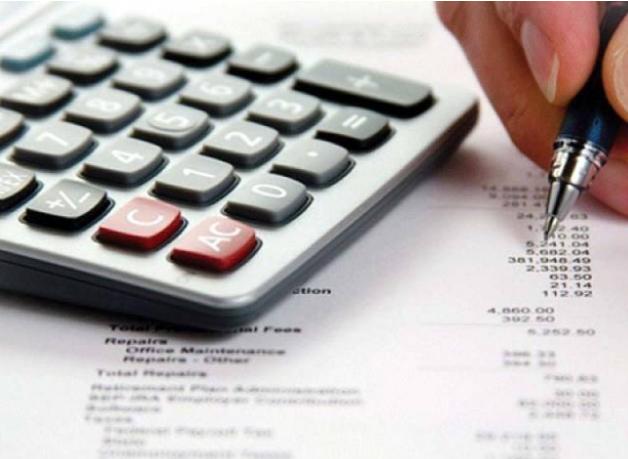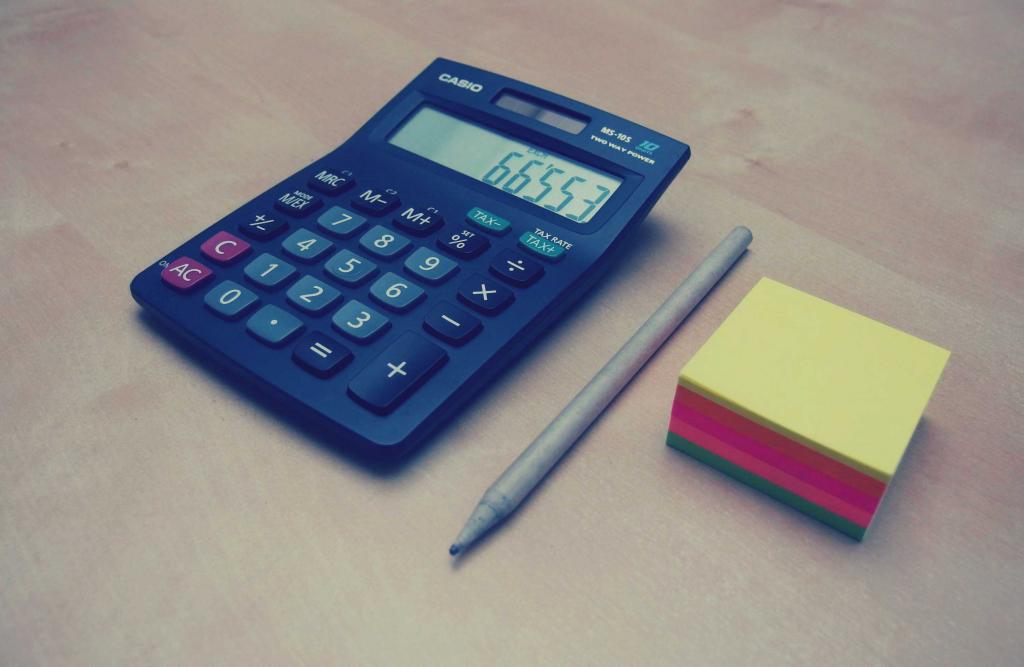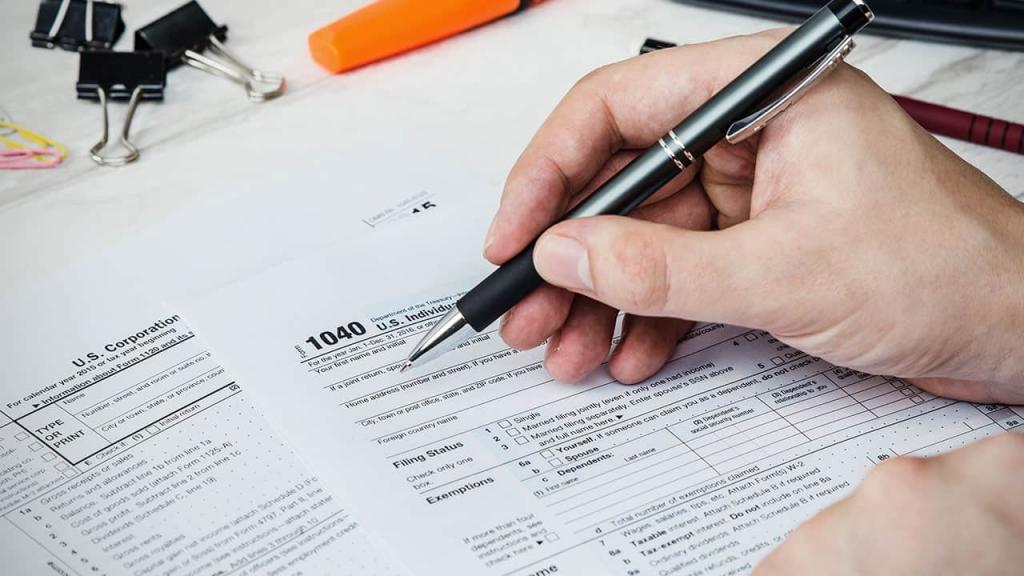The single tax on imputed income in the Russian Federation is a special tax regime, which was established as a lightweight option for calculating taxes and reporting for companies. This system is applicable for small and medium-sized companies who wish:
- simplify reporting;
- replace a number of taxes (VAT, property tax, income tax, personal income tax) with one single;
- independence of tax payments on income actually received.
All these advantages allow the UTII system to become very popular among taxpayers. However, the system is not applicable in all areas and regions of Russia, but only where the permission of local authorities is established.
The question of how to calculate UTII tax and an example of calculations are reflected in the framework of this article.

Calculation formula
An example of how to calculate UTII is given in the article below. To calculate the amount of this type of tax, the standard formula is used, but with the use of features by coefficients.
The formula is as follows:
N = (DB * VFP * K1 * K2) / Kk * Kf * 15% - Fear,
where DB is the basic return, rubles .;
VFP - the value of a physical indicator;
K1 - factor - deflator, established by the law of the Russian Federation;
K2 - a multiplier depending on the business environment of the company;
Kk - the calendar number of days in a month, days;
KF - the actual number of days the company operates, days.
Fear - the amount of insurance payments for employees (or for individual entrepreneurs).
The amount of insurance benefits paid to employees for deduction may not exceed 50% of the amount of tax calculated.

The values of the factors K1 and K2
The value of K1 is established depending on the legislative standards in force throughout the country. In 2017, this ratio was 1.798, in 2018 - 1.868, and in 2019 it will correspond to a value of 2.063.
Value of basic profitability
The value of the basic profitability for enterprises can be determined in accordance with Art. 346.29 of the Tax Code. The values of this indicator for the most significant activities are presented in the table below.
| Type of business | FP | DB, RUB |
| Domestic services | The number of employees (if IP, then including it) | 7500 |
| Veterinary Services | Number of company employees (plus individual entrepreneurs) | 7500 |
| Car repair and maintenance services, car wash | Number of company employees (plus individual entrepreneurs) | 12000 |
| Leasing of parking spaces | Parking area, sq.m | 50 |
| Freight transport | The number of trucks for transportation | 6000 |
| Passenger car transportation | The value of the number of passenger seats | 1500 |
| Retail sales in the organization of a permanent point of sale with a trading room | Hall area, sq.m | 1800 |
| Retail sales on non-permanent trading places with an area of up to 5 sq.m | The number of trading places | 9000 |
| Retail sales at an unstable trading location of more than 5 sq.m. | Hall area | 1800 |
| Trade in the form of posting (delivery) | Number of company employees (plus individual entrepreneurs) | 4500 |
| Commodity sales using vending machines | Number of vending machines | 4500 |
| Catering services with a lounge for visitors | Hall Area | 1000 |
| Catering services without a hall for visitors | Number of company employees (plus individual entrepreneurs) | 4500 |
| Outdoor advertising | Image Area | 3000 |
| Electronic Signage Advertising | Surface area | 5000 |
| Advertising on transport | Number of vehicles used for advertising | 10000 |
| Hotel type services | The area of the premises for placement | 1000 |
| Rental services of places and equipment | Number of transferred places | 6000 |
| Land leasing services | Land Transfer Area | 1000 |

Coefficient K2
The value of the factor K2 is established in accordance with the Regulation “On the single tax on imputed income for certain types of activities” dated November 19, 2008 No. 239.
In accordance with this provision, the value of K2 can be defined as the product of the coefficients K2-1, K2-2, K2-3 and K2-4.
After calculating the product of all the coefficients, situations are possible:
- if the resulting product is above 1, then the value 1 is applied;
- if the resulting product is below 0.005, then the value is 0.005.
The factors are set in the calculations for the year.
Let us consider in more detail the significance of these coefficients for city taxpayers.
K2-1 factor: how to determine?
When considering the issue of UTII (and how to calculate by example) it is very important to study the value of K2-1.
The K2-1 factor can be installed in accordance with the characteristics and features of doing business and entrepreneurial activity. Its limits are set from 0.01 to 1.
The table below shows the values of this ratio by type of business.
| Type of business | Subspecies | K2-1 |
| Trade (retail) in a stationary location with a trading room | Childen's goods | 0,5 |
| Medication | 0,6 | |
| Books and magazines | 0,6 | |
| Fabrics | 0,9 | |
| Trade (retail) in a stationary location, but without a trading room. Trade (retail) with an unsteady location with an area of less than 5 square meters | Kiosk | 1 |
| Sales of newspaper products through premises (such as a kiosk) | 0,6 | |
| Trading Container | 1 | |
| Tent at the trading place | 0,8 | |
| Market Trading | 1 | |
| Open market or fair | 0,6 | |
| Trade in a tent for children's goods | 0,4 | |
| Open market toys and children's goods | 0,3 | |
| Other types of trade in children's products | 0,5 | |
| Trade (retail) of an unsteady plan with a trade area of more than 5 sq.m. | Kiosk | 1 |
| Newsstand | 0,6 | |
| Place with container | 1 | |
| Place with a tent | 0,8 | |
| Market place | 1 | |
| Place in an open market or fair | 0,6 | |
| Tent with baby goods | 0,4 | |
| Baby products at the fair (open market) | 0,3 | |
| Others with children's assortment | 0,5 | |
| Trade in bulk or delivery | Car shop, caravan | 1 |
| Spacing | 1 | |
| Catering services with a lounge for visitors | Dining room for organization | 0,6 |
| Diet Dining | 0,3 | |
| Soldier's Canteen | 0,3 | |
| A restaurant | 1 | |
| Cafe, bar | 1 | |
| Diner | 1 | |
| Other | 1 | |
| In educational places | 0,3 | |
| Catering services without a hall for visitors | 1 | |
| Domestic services | Shoe repair | 0,6 |
| Repair of fur products | 1 | |
| Garment Repair | 0,6 | |
| Repair of textile haberdashery | 0,8 | |
| Knitwear Repair | 0,6 | |
| Hardware Repair | 1 | |
| Watch Repair | 0,8 | |
| Hardware repair | 0,9 | |
| Jewelry Repair | 1 | |
| Furniture Repair | 1 | |
| Dry cleaning | 0,6 | |
| Housing repair (construction) | 1 | |
| Photo Services | 1 | |
| Baths | 0,7 | |
| Saunas | 1 | |
| Hairdressing services | 1 | |
| Rental Services | 1 | |
| Funeral services | 1 | |
| Repair services, car maintenance services, car wash services | 1 | |
| Leasing of parking spaces | 1 | |
| Shipping | Taxi and bus passengers up to 6 m | 1 |
| Other | 0,4 | |
| Veterinary Services | 1 | |
| Outdoor advertising | 0,35 | |
| Hotel type services | With the price of services over 1500 rubles. per day | 1 |
| When the price of services is below 1500 rubles. per day | 0,6 | |
| Hostel | 0,4 |

K2-2 factor: how to determine?
When considering the UTII (how to calculate using the example below), it is very important to study the value of K2-2.
The K2-2 factor is determined in accordance with the place of business (enterprise zone). It is established by Appendix 2 of the above Regulation “On the single tax on imputed income for certain types of activities” dated November 19, 2008 No. 239.
| A place | K2-2 |
| City outskirts | 0,75 |
| Railway stations, bus stations, bus stations, markets, fairs, shopping centers, shopping malls | 0,75 |
| Other streets | 0,7 |

K2-3 factor: how to determine?
When considering how to calculate UTII by example, it is very important to investigate the value of K2-3.
The K2-3 coefficient depends on the salary of company employees in the application of wage labor.
The average monthly salary can be calculated on an accrual basis from the beginning of the year by dividing the base for calculating insurance premiums by the number of employees. The average value is also taken as the number of employees.
This calculation should be attached to the UTII declaration to prove the legitimacy of applying the K2-3 factor.
If the level of remuneration is below the subsistence level,
then K2-3 = 1.2.

Example No. 1. The calculation of the average wage
When researching how to calculate UTII, an example in trade is presented below. It deals with the calculation of average wages presented below.
| Month | Payroll before insurance payments, i.e. | Number of employees | PHOT / number |
| January | 455 | 13 | 35,0 |
| February | 468 | 14 | 33,4 |
| March | 498 | 12 | 41,5 |
| April | 476 | 13 | 36,6 |
| May | 490 | 14 | 35,0 |
| June | 478 | 15 | 31,9 |
| July | 444 | 14 | 31,7 |
| August | 501 | 13 | 38,5 |
| September | 469 | 12 | 39,1 |
| October | 499 | 13 | 38,4 |
| November | 468 | 14 | 33,4 |
| December | 433 | 14 | 30,9 |
| TOTAL | 5679 | - | 425,5 |
Calculation of the average salary:
425.5 / 12 = 35.5 thousand rubles.
The subsistence level as of October 31, 2018 was: 10,623 rubles for the able-bodied population.
Since the obtained value of the average wage amounted to 35.5 thousand rubles per month, which is higher than the subsistence level, the value of K2-3 is taken equal to 1.
K2-4 factor: how to determine?
The value of K2-4 is determined depending on the seasonality of trade. It is equal to 0.84 in the presence of such a factor.

Example No. 2 calculation of UTII
How to calculate UTII in the example with IP, consider below.
Initial data for an example:
- Services: manufacturing and repair of metal products.
- Vladimir city.
- OPF - IP.
- There are no employees.
- K1 = 1.868.
The calculation is carried out as follows:
- K2 = 1 * 0.7 * 1 * 1 = 0.7.
- UTII = 7500 * 1.868 * 0.7 * 0.15 = 1471 rubles. - the amount of tax per month.
- 1471 * 3 = 4413 rub. - tax amount per quarter.
- The amount of insurance payments for the year: PFR - 26545, compulsory medical insurance - 5840. Total amount for the year: 32385 rubles.
- The amount of insurance payments for the quarter: 32385/4 = 8096 rubles.
- The amount of tax payable: 4413 - 8096 = - 3683 rubles.
An entrepreneur does not have to pay UTII to the budget.
The amount of deductions of IP for themselves in full reduces the value of the calculated UTII tax.
Example No. 3: UTII: how to calculate, example in retail
Initial data:
- OPF-IP;
- type of activity: retail trade in clothes;
- Hall area - 20 sq.m .;
- location: shopping center;
- basic profitability - 1800 rubles;
- FP = 20 sq.m .;
- K1 = 1.868;
- K2 = 1.
How to calculate UTII according to the formula:
UTII = 1800 * 20 * 1.868 * 1 * 0.15 = 10,087 rubles per month.
Calculation for the quarter:
10087 * 3 = 30261 rub.
The amount of insurance payments for the year: PFR - 26545, compulsory medical insurance - 5840. Total amount for the year: 32385 rubles.
The amount of insurance payments for the quarter: 32385/4 = 8096 rubles.
How to calculate UTII for an IP:
30261 - 8096 = 22165 rubles.
Example No. 4: calculation for freight
How to calculate UTII for transportation and an example of this is presented below.
Initial data:
- DB = 6000 rubles;
- FP = 3 cars;
- K1 = 1.868;
- K2 = 1.
Tax calculation:
UTII = 6000 * 3 * 1.868 * 1 * 0.15 = 5044 rubles. to the quarter.
Answers to frequently asked questions
Question No. 1. Are the terms for paying tax and submitting a declaration on UTII different?
The tax payment deadline is the date no later than the 25th day of the month following the reporting one. And the deadline for submitting a declaration is no later than the 20th.
Question No. 2. What if the deadlines fall on weekends and holidays?
In such a situation, the deadline is postponed to the next day following the weekend (holidays).
Question No. 3. If there is no activity, is it necessary to calculate the tax?
Yes it is. Calculation and payment of tax does not depend on whether you have received income or not. It is still necessary to provide a declaration with calculations and pay.
Errors in calculating tax
Mistake No. 1. How to calculate UTII tax using insurance premiums. Very often, entrepreneurs, when reducing the amount of UTII for payment, unlawfully underestimate it, since the attention is paid to the amount of insurance premiums that were accrued, but not necessarily paid. We must not forget that only those insurance premiums that are paid in the reporting period are accepted for calculation.
Mistake No. 2. Underestimation of physical indicators: areas of trade, number of employees, etc. It is the basis for the appointment of a field audit with all the ensuing consequences.
Conclusion
Thus, the main feature of UTII is the peculiarities of calculating the coefficient K2 when it is used in the formula.









